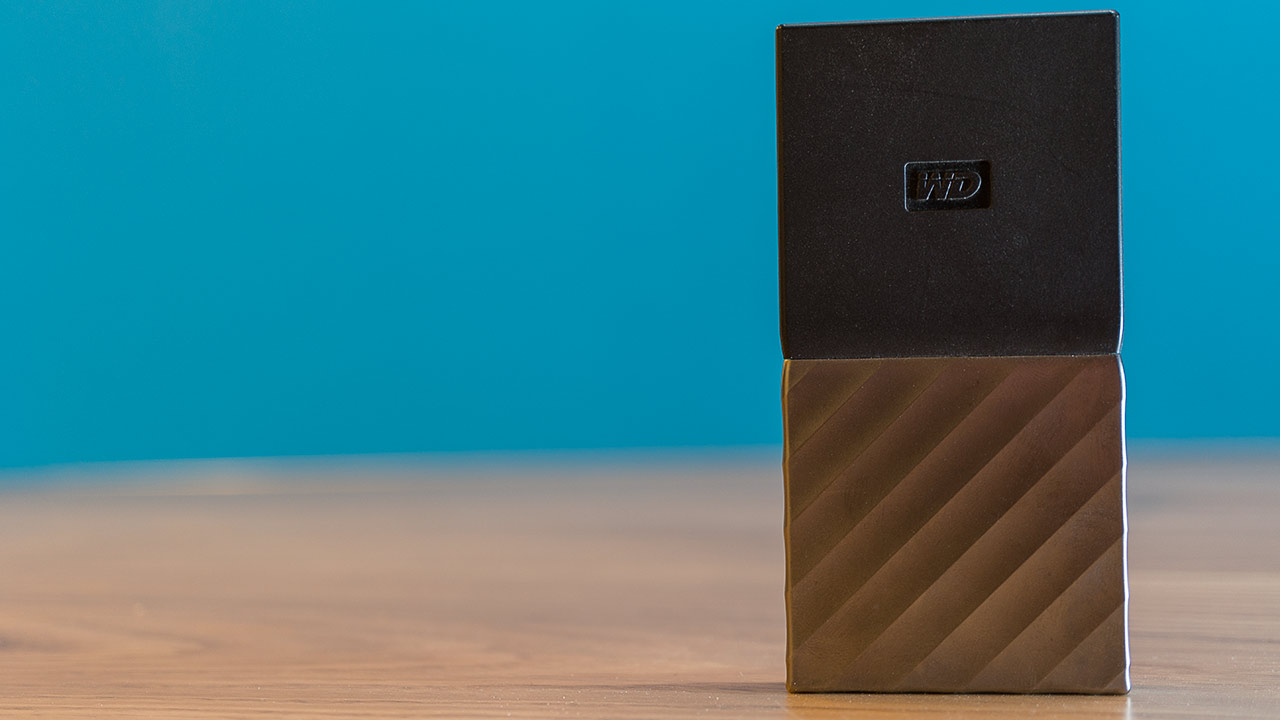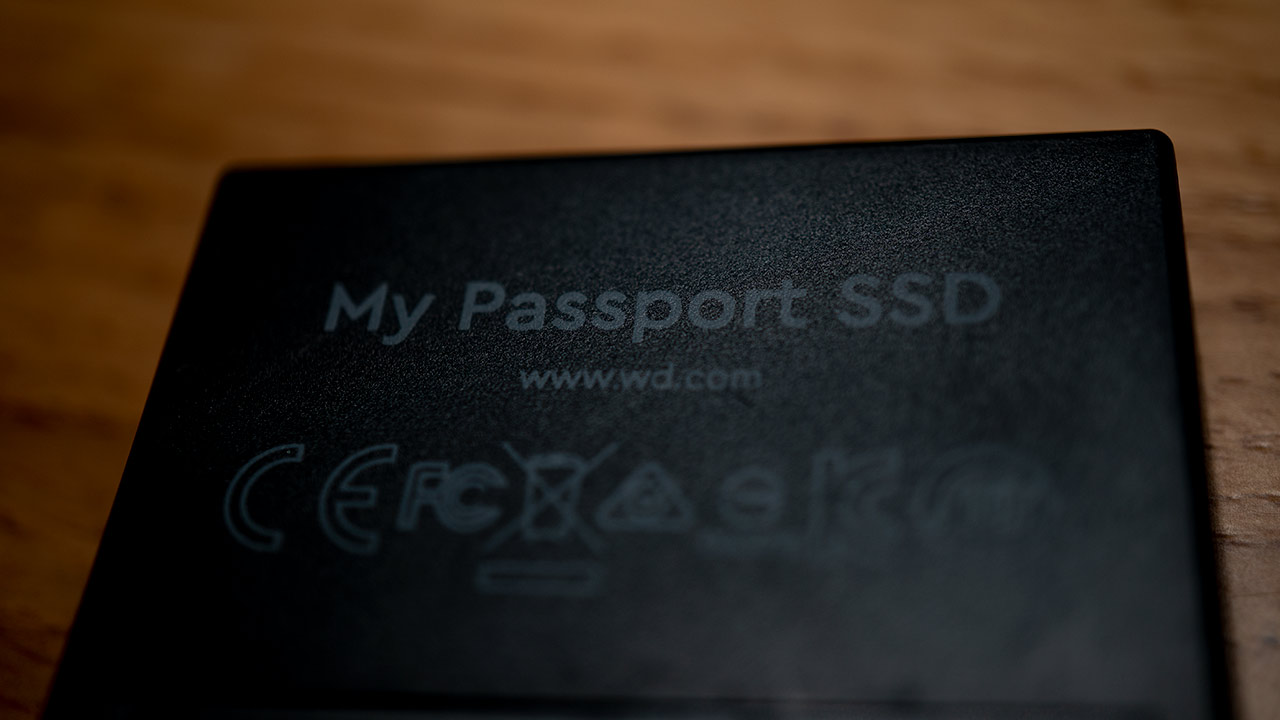Today we continue our portable storage review series and this time around we have our second contestant – the WD My Passport SSD.
Just like the Sandisk Extreme Portable SSD which we recently reviewed here, the WD My Passport SSD is a tiny unit, weighing just under 40g or 1.4 oz and measuring about the same as the Sandisk drive – 9cm or 3.5 inches long over 4.5cm or under 2″ wide. Unlike the Sandisk, this unit is made from a combination of metal and plastic and is designed to be shock-resistant (but not waterproof as far as we understand).
Like the Sandisk the external design is very minimalistic it has no buttons or switches of any sort and the only connector is a single USB-C on the lower side. It comes with a single USB-C to USB-C cable plus a USB-C to USB-A adaptor. The cable isn’t super short but we would really like to see manufacturers include at least a 1m cable which is thinner and more flexible with these drives especially if you need a way to connect them to a desktop.
WD My Passport SSD – compact design
Before we look at the performance of the drive we do have an important disclaimer. Since the time we got this unit – around mid 2018, WD released a nearly identical drive with a different part number that on paper is a bit faster and surprisingly is also less expensive. We are testing here the older version which might explain why some reviewers online got faster results than us with their units.
Like we did last time, we used brand new super fast studio computer to perform our tests (this behemoth has a Core i9-9900K processor, 32GB of RAM with an Asus RTX 2070 GPU and Z390 Gigabyte DESIGNARE motherboard with built-in dual TB3 ports and two Samsung 970 NVME drives running with the latest win 10 Pro).
We have conducted both synthetic tests using CrystalDiskMark 6.0.2 and real-world transfer tests where we moved a number of larger and smaller video files from our computer to the drive and back – this time around we did the second real-world transfer test on a different computer to avoid the inaccurately high result we got last time.
CrystalDiskMark scores showed nice 384MB/s read and 373MB/s write which is quite a bit slower than the Sandisk – although again looking at what other reviewers got with the newer version of this drive – it seems much more in tune with the Sandisk SSD which isn’t surprising given that Sandisk is now part of WD.
On the real world test, we were able to transfer 5.65GB of files to the drive in under 17 seconds which is about 332MB/s and from the drive to the computer (a different PC as we have mentioned avoiding the issues that we had last time) we got about the same time so around 330MB/s.
The older Gen My Passport SSD
So let’s conclude. After looking at the results and comparing them to the SanDisk SSD drive, this review feels a bit redundant, but it might actually not be, since the older generation WD SSD is still selling at the moment and for some reason for a very substantial premium which might lead some users to think that it must be better. Well, it surely isn’t better than the SanDisk we tested and looking at other reviews online it seems that the newer version of this drive is indeed on par with that drive so either go with the SanDisk at around $200 per 1TB of storage or the newer version of this drive at about $180 (update: the latest prices as of early March 2019 on Amazon are more or less identical at just under $190), but skip this expensive older generation unit.
You can check out more LensVid exclusive articles and reviews on the following link.

You can support LensVid by shopping with our affiliate partners
Affiliates: Amazon, B&H, Adorama and E-bay.
Why should you trust us?
